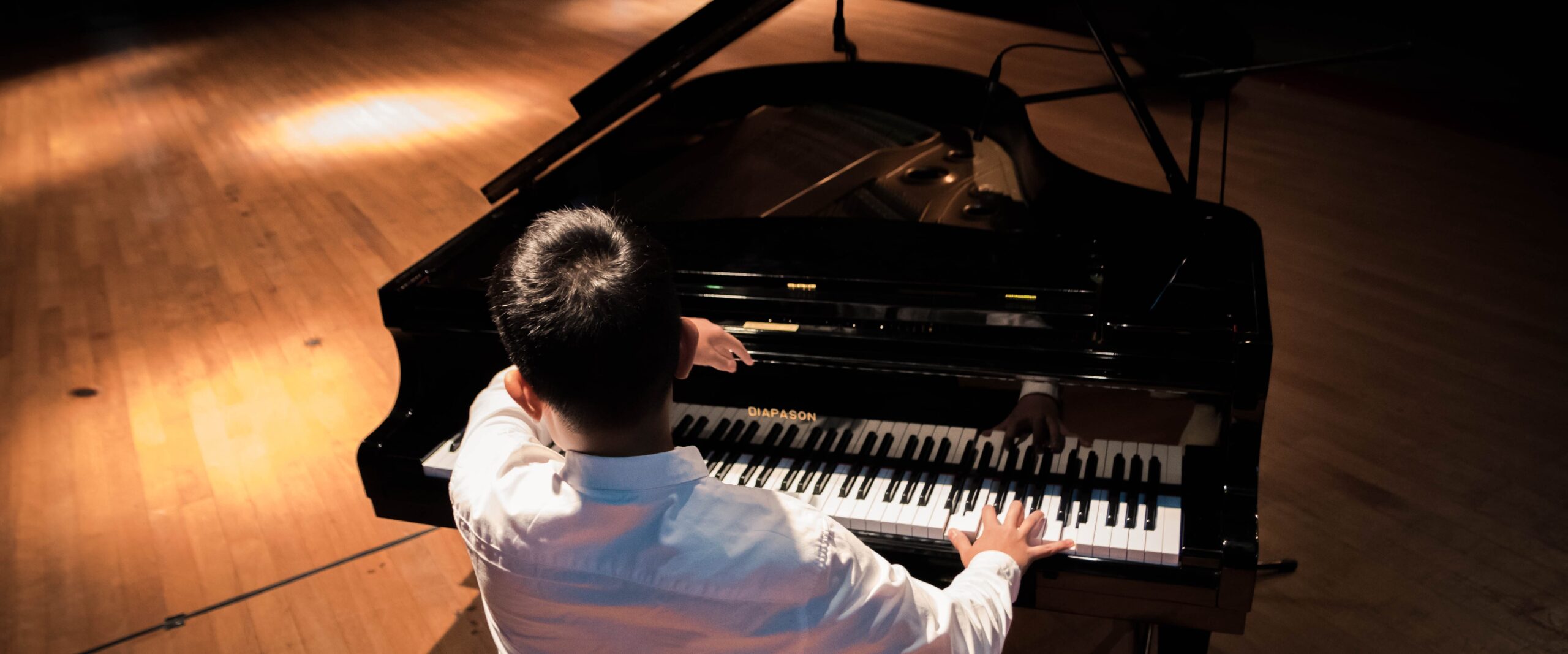If you’re wondering, “what is piano jazz?”, you’ve come to the right place. This comprehensive guide answers all your questions about this intriguing musical style, breaking down its history, sub-genres, and the basics you’ll need to get started.

Table of Contents
Understanding the Basics of Piano Jazz
If you’re new to the world of jazz, understanding the basics is crucial. Jazz originated in African American communities in the United States, with roots in both African and European musical traditions. Specifically, piano jazz leverages the piano’s capabilities to express a wide range of emotions and tones, setting it apart from other genres like classical or rock.
The focus is often on improvisation, rhythm, and expressiveness, inviting both the performer and the listener into a dialogue that is spontaneous and rich in musical innovation.
The Historical Context
The emergence of piano jazz is deeply rooted in the socio-cultural landscape of early 20th century America. The genre was influenced by blues, a style that originated in the African American communities of the Southern United States, as well as ragtime and church music.
Over time, the jazz movement gained momentum, and the piano became one of its key instruments, primarily because of its versatility and range.
Styles Within Piano Jazz
Understanding what piano jazz is involves recognizing that it’s a multifaceted genre, home to various styles that have evolved over the years. Each style has its distinctive traits, yet all are united by the core principles of jazz. Here’s an extended look at some of these styles:
Bebop
Bebop emerged in the 1940s as a reaction against the dance-oriented swing music of the previous decade. This style focuses on fast tempos, complex chord progressions, and intricate melodies.
Bebop is known for its musical virtuosity, where soloists showcase their technical prowess. Pieces in Bebop often feature a melody (“the head”) followed by improvisational solos and conclude with a return to the head.
Key Artists: Charlie Parker, Dizzy Gillespie, Thelonious Monk
Video example of Bebop
Here’s a video example of Bebop by Dizzy Gillespie…
Swing
Swing is often hailed as one of the most accessible styles of jazz, originating in the late 1920s and reaching its zenith in the 1930s and 1940s. The emphasis in Swing is on off-beat notes and danceable rhythms, making it a hit in dance halls of the era. Swing piano often features walking bass lines and a strong rhythmic drive.
Key Artists: Duke Ellington, Count Basie, Benny Goodman
Video example of Swing
Here’s a video example of Swing jazz..
Latin Jazz
Incorporating Latin American rhythms into the harmonic and improvisational structure of jazz creates the vibrant and danceable style known as Latin Jazz. This genre often incorporates instruments like congas and timbales, adding a distinct rhythmic flavor. Latin Jazz piano may utilize specific Latin modes and scales in addition to typical jazz harmonies.
Key Artists: Dizzy Gillespie, Tito Puente, Chucho Valdés
Video example of Latin Jazz
Here’s a video example of Latin Jazz…
Essential Elements
As you navigate the world of piano jazz, you’ll encounter some foundational elements that define the genre:
Improvisation
At the heart of jazz music lies improvisation. Unlike the rigid structures of classical music, where each note is meticulously pre-determined, jazz grants musicians the freedom to spontaneously create melodies. When you’re improvising in jazz, you’re conversing musically with other band members and the audience, making each performance a unique experience.
Rhythm
Jazz incorporates complex rhythmic structures that set it apart from other musical genres. One of the key elements is syncopation, which involves accentuating the weaker beats in a musical bar. Additionally, swing rhythms, where the timing of notes is subtly altered, are common, particularly in styles like Bebop and Swing.
Melody and Harmony
In jazz, melodies often draw from unique scales, such as the blues scale or the diminished scale. Harmonically, jazz is rich and complex, employing an array of chords that extend beyond basic major and minor triads. You’ll encounter 7th chords, 9th chords, 11th and 13th chords, and even altered chords that incorporate flattened or sharpened notes.
Getting Started With Piano Jazz
If your curiosity about jazz has peaked, it’s time to take the next steps.
Choose a Keyboard or Piano
When you’re just starting out, an acoustic piano with weighted keys offers the most authentic experience. However, digital keyboards are more affordable and portable.
Learn Basic Scales
Start with the basics, like the blues scale and the pentatonic scale. These scales form the backbone of many jazz compositions and improvisations.
Understand Basic Jazz Chords
The harmonic language of jazz is more complex than that of pop or rock. Start by learning the dominant 7th chords, minor 7th chords, and extended chords like the 9th, 11th, and 13th chords.
Start Practicing
Once you have a foundation, start practicing by playing simple jazz standards. Songs like “Autumn Leaves” or “Blue Monk” are great starting points.
Take Lessons
Though self-learning is possible, guidance from a qualified jazz piano instructor can be invaluable. They can provide personalized feedback and expose you to different styles and techniques.
For more articles on piano questions, click here: Piano Questions: Your Ultimate Guide to Understanding All About Pianos
Conclusion: What is Piano Jazz?
Understanding piano jazz is your first step into a rich world of musical expression. Whether you’re a seasoned musician or a total beginner, the journey into piano jazz offers endless possibilities for growth and enjoyment.